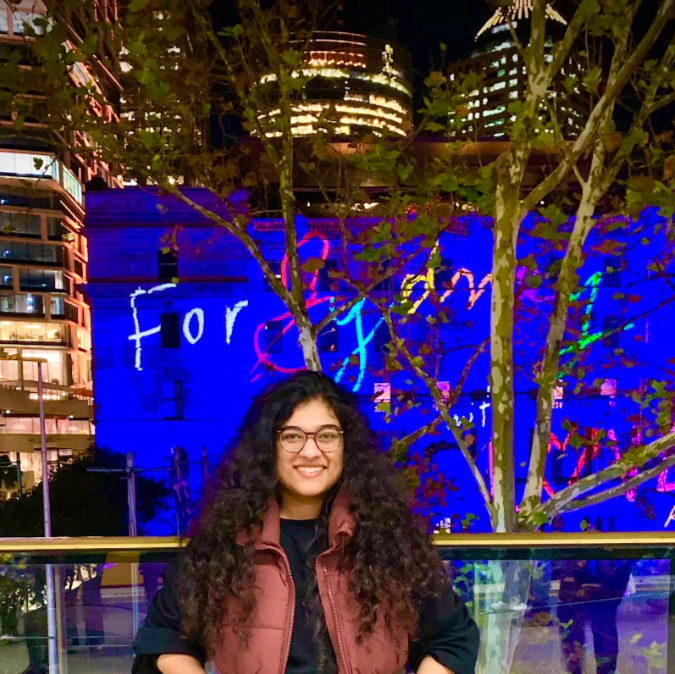Super Tour
Super Experience
Historical tour in São Paulo
R8UVU5BCY3gGUyMMBodhbY9vhgV2
Historical tour in São Paulo
Discover some of the most important landmarks in São Paulo and learn about Brazil's history and archtecture
moreDiscover some of the most important landmarks in São Paulo and learn about Brazil's history and archtecture
["https://firebasestorage.googleapis.com/v0/b/freeguides-prod.appspot.com/o/assets%2Ftours%2Fc2TKy1ZlOjRfQBPMlKEU%2FWhatsApp%20Image%202021-05-21%20at%2019.39.36.jpeg?alt=media&token=8b3fd414-1b08-4fb8-9aa1-32ddcd85826e","https://firebasestorage.googleapis.com/v0/b/freeguides-prod.appspot.com/o/assets%2Ftours%2Fc2TKy1ZlOjRfQBPMlKEU%2FWhatsApp%20Image%202021-05-22%20at%2014.57.23.jpeg?alt=media&token=03561463-2893-497f-8095-ef3d927477bb"]
["https://firebasestorage.googleapis.com/v0/b/freeguides-prod.appspot.com/o/assets%2Ftours%2Fc2TKy1ZlOjRfQBPMlKEU%2FWhatsApp%20Image%202021-05-21%20at%2019.39.36.jpeg?alt=media&token=8b3fd414-1b08-4fb8-9aa1-32ddcd85826e","https://firebasestorage.googleapis.com/v0/b/freeguides-prod.appspot.com/o/assets%2Ftours%2Fc2TKy1ZlOjRfQBPMlKEU%2FWhatsApp%20Image%202021-05-22%20at%2014.57.23.jpeg?alt=media&token=03561463-2893-497f-8095-ef3d927477bb"]
[{"address":"São Paulo Cathedral","location":{"longitudeDelta":0.10234184804510059,"latitudeDelta":0.09219986310369421,"latitude":-23.55101890692176,"longitude":-46.63436814999999},"media":[{"metadata":{"width":1000,"height":1108},"type":"img","version":1,"content":"https://firebasestorage.googleapis.com/v0/b/freeguides-prod.appspot.com/o/assets%2Ftours%2Fc2TKy1ZlOjRfQBPMlKEU%2FWhatsApp%20Image%202021-05-22%20at%2014.50.23.jpeg?alt=media&token=4eb00555-31d1-4411-97dd-9db15d709247"},{"type":"text","content":"This neo-Gothic cathedral may catch your eye with its enormous spires and you'll hear it referred to by many (similar) names, including Catedral da Sé, Catedral Metropolitana and Catedral da Sé de São Paulo. The church is smack dab in the center of the city, near the main square of Praça da Sé. Inside, the venue can hold up to 8,000 people, which means it's the largest church in the city, and visitors can enjoy the intricate details that represent Brazil – from coffee beans to flora to animals – carved into the structure. Recent travelers said they enjoyed their visit to this cathedral, which garnered superlatives like \"beautiful,\" \"lovely\" and \"impressive\" from patrons. Many said you should plan to visit on a Sunday morning for Mass, as it's an incredible celebration. Several visitors warn, however, that the area surrounding the cathedral is a little dicey; so keep your eyes on your belongings."}]},{"address":"Pateo do Collegio","location":{"longitudeDelta":0.10234184804510059,"latitudeDelta":0.09219986310369421,"latitude":-23.548169456920824,"longitude":-46.632835499999985},"media":[{"metadata":{"width":1000,"height":750},"type":"img","version":1,"content":"https://firebasestorage.googleapis.com/v0/b/freeguides-prod.appspot.com/o/assets%2Ftours%2Fc2TKy1ZlOjRfQBPMlKEU%2FWhatsApp%20Image%202021-05-22%20at%2014.53.09.jpeg?alt=media&token=bddb4c22-3ad4-4d71-98fc-03503923f1a5"},{"type":"text","content":"In 1554, the Jesuit priests, with the intention of teach and catechize the Brazilian Indians built this school made with a technique named “pau a pique” which was mud, bamboo and straw. In 1556 the small village was becoming bigger so a school and a little church was built with a technique named taipa de pilão which was mud, plants, manure and animal’s blood. At the Páteo do Colégio garden is possible to see a taipa de pilão wall. All the museum itens have explanations in Portuguese, English and Spanish. The garden is also a wonderful place with pieces of art and nature together. The coffee shop has great fresh food and some charming delicious candies which are a good option to give someone as a gift."},{"metadata":{"width":1000,"height":564},"type":"img","version":1,"content":"https://firebasestorage.googleapis.com/v0/b/freeguides-prod.appspot.com/o/assets%2Ftours%2Fc2TKy1ZlOjRfQBPMlKEU%2F3-1-1024x576.jpg?alt=media&token=0434c951-7266-4352-b14b-558f3a3da4fe"}]},{"address":"Mercado Municipal de São Paulo","location":{"longitudeDelta":0.10234184804510059,"latitudeDelta":0.09219986310369421,"latitude":-23.541768357226918,"longitude":-46.62939739999999},"media":[{"metadata":{"width":232,"height":150},"type":"img","version":1,"content":"https://firebasestorage.googleapis.com/v0/b/freeguides-prod.appspot.com/o/assets%2Ftours%2Fc2TKy1ZlOjRfQBPMlKEU%2Fphoca_thumb_m_Mercado%20%C3%A0%20Noite.jpg?alt=media&token=a1f8dab3-3bfa-4dfe-b4e0-5757f3d93e1b"},{"type":"text","content":"Originally the city's very first grocery market, Mercadão first opened in 1933 and hosts around 300 stalls selling everything from fresh fruits and vegetables to spices, cheeses and sweets to meat and seafood. The building is also decorated with stunning stained-glass windows (72 windows that make up 32 panels) that depict different aspects of food production in the region. suggest taking advantage of the free samples available (vendors generously hand them out) and shopping around for the best price. Travelers warn that the market gets exceptionally busy on the weekends, so come prepared for long lines; even better, try to visit on a weekday."},{"metadata":{"width":275,"height":183},"type":"img","version":1,"content":"https://firebasestorage.googleapis.com/v0/b/freeguides-prod.appspot.com/o/assets%2Ftours%2Fc2TKy1ZlOjRfQBPMlKEU%2Fdownload%20(1).jfif?alt=media&token=2ee177cf-1891-45f6-9562-f172810ade12"}]},{"address":"Monastery of St. Benedict","location":{"longitudeDelta":0.10234184804510059,"latitudeDelta":0.09219986310369421,"latitude":-23.54389455691943,"longitude":-46.63380699999999},"media":[{"metadata":{"width":1000,"height":666},"type":"img","version":1,"content":"https://firebasestorage.googleapis.com/v0/b/freeguides-prod.appspot.com/o/assets%2Ftours%2Fc2TKy1ZlOjRfQBPMlKEU%2Fcasamento_mosteiro_sao_bento_e_hipica_paulista065.jpg?alt=media&token=aeb65bc3-7853-4fce-b913-89786739152f"},{"type":"text","content":"As you approach Mosteiro de São Bento de São Paulo (St Benedicts Monastery) from the center of São Paulo, you’ll be overwhelmed by its scale and beauty; the building is juxtaposed against the towering pillars of glass skyscrapers surrounding it. São Bento Monastery is one of the most important religious sites in Brazil and one of São Paulo’s most visited attractions. Attend Sunday Mass to hear Gregorian chants, visit the living quarters of the Benedictine monks, or buy bread and preserves made by the clerics within the monastery. Admire the intricate and lavish details inside the main hall or attend a theater performance.\nEven non-religious visitors will appreciate the atmosphere and history that surround the monastery. Its architecture is characteristic of the 17th century, when it was originally conceived. The current incarnation of the São Bento Monastery was constructed in 1922 under the instruction of architect Richard Berndl. Look up to see the huge clock, which is said to have the most exact time in São Paulo. Wait for its bells to chime every 15 minutes."}]},{"address":"Municipal Theatre of São Paulo","location":{"longitudeDelta":0.10234184804510059,"latitudeDelta":0.09219986310369421,"latitude":-23.545473656919917,"longitude":-46.63881735},"media":[{"metadata":{"width":1000,"height":579},"type":"img","version":1,"content":"https://firebasestorage.googleapis.com/v0/b/freeguides-prod.appspot.com/o/assets%2Ftours%2Fc2TKy1ZlOjRfQBPMlKEU%2FDSC00034%40STIG-1.jpg?alt=media&token=1138403d-4f45-42b6-80c0-76291fcfb697"},{"type":"text","content":"Modeled after the elegant Palais Garnier in Paris, São Paulo's Theatro Municipal is a work of art. This grand theater was built between 1903 and 1911, and the design of its detailed facade incorporates Renaissance, Baroque, neoclassical and art nouveau styles. Inside, visitors are greeted with gilded balconies and rich red seats and curtains. The theater is a cultural icon, thought to have sparked the city's vivid interest in the arts (and specifically modern art) after it hosted the Week of Modern Art in 1922. Today, the Theatro Municipal hosts a variety of performances, including operas, plays, symphony orchestras and ballets. If you're unable to make a performance, free guided tours of the venue (in English) are also available."},{"metadata":{"width":1000,"height":579},"type":"img","version":1,"content":"https://firebasestorage.googleapis.com/v0/b/freeguides-prod.appspot.com/o/assets%2Ftours%2Fc2TKy1ZlOjRfQBPMlKEU%2FDSC00034%40STIG-1.jpg?alt=media&token=d4262332-6c77-4b47-8be4-c1c66b219352"}]},{"address":"Luz Station","location":{"longitudeDelta":0.10234184804510059,"latitudeDelta":0.09219986310369421,"latitude":-23.535076356916484,"longitude":-46.63535594999999},"media":[{"metadata":{"width":1000,"height":750},"type":"img","version":1,"content":"https://firebasestorage.googleapis.com/v0/b/freeguides-prod.appspot.com/o/assets%2Ftours%2Fc2TKy1ZlOjRfQBPMlKEU%2F1200px-estac3a7c3a3o_da_luz.jpg?alt=media&token=58ac53b9-15ec-43f7-8eea-b059fbb4e968"},{"type":"text","content":"Estação da Luz is the main railway station of the Luz neighbourhood and an important hub for metropolitan trains and the metro network in the city of São Paulo. The building also hosts the Museu da Lingua Portuguesa, the Museum of the Portuguese Langauge. The building is one of the most important historical monuments of the city. he first station was built in 1867 to allow coffee from Santos to enter the city and transport people. As the city grew the station became indicate for the bustling metropolis. Thus a new station larger station was needed. The old station was demolished and the new station was built in 1901 by English Architect Henry Driver. The building was first assembled in Glasgow and then disassembled, shipped to São Paulo to serve its purpose, which it has done for over 100 years.\nThe building is built in a Victorian style, more specifically in a Neo-classical style. The Neo-classical style is usually symmetrical and has a strict formal rhythm throughout the facade. The facade is usually dictated by aesthetical qualities rather than functional ones. These qualities can be seen in the station’s facade. There is a rhythm to the windows, use of columns and ornamentation. The buildings large clock tower is one of the most eye-catching parts of the building, and for a long time was one of the tallest landmarks in the city. "},{"metadata":{"width":1000,"height":750},"type":"img","version":1,"content":"https://firebasestorage.googleapis.com/v0/b/freeguides-prod.appspot.com/o/assets%2Ftours%2Fc2TKy1ZlOjRfQBPMlKEU%2F1200px-estac3a7c3a3o_da_luz.jpg?alt=media&token=7f549c46-0b43-4b54-a84e-d5c58d26c84e"},{"metadata":{"width":702,"height":415},"type":"img","version":1,"content":"https://firebasestorage.googleapis.com/v0/b/freeguides-prod.appspot.com/o/assets%2Ftours%2Fc2TKy1ZlOjRfQBPMlKEU%2Fmuseu-da-lingua-portuguesa72.jpg?alt=media&token=9d483369-563f-413f-b529-462dd8029964"}]}]
5.00
0

Architecture
4
hours
3
times run
#
13
Rank
Discover some of the most important landmarks in São Paulo and learn about Brazil's history and archtecture
5.0
Rating
Architecture
4
Hours
3
TOURS COMPLETED
#
13
rank
≈
0 kms
Language
English
Start Location
Tags
This is some text inside of a div block.
On-tour Inclusion and Exclusion
Inclusions
Self-guided
Anytime, Anywhere
Creates by locals
Photo-taking assist
Video-taking assist
Exclusion
Drinking water
Sunglass and skin sunblock
Thank you! Your submission has been received!
Oops! Something went wrong while submitting the form.
9/9/2022


Priyanshi Srivastava
9
Sep
,
2022
5
5
Thank you! Your submission has been received!
Oops! Something went wrong while submitting the form.
Preview
[{"address":"São Paulo Cathedral","location":{"longitudeDelta":0.10234184804510059,"latitudeDelta":0.09219986310369421,"latitude":-23.55101890692176,"longitude":-46.63436814999999},"media":[{"metadata":{"width":1000,"height":1108},"type":"img","version":1,"content":"https://firebasestorage.googleapis.com/v0/b/freeguides-prod.appspot.com/o/assets%2Ftours%2Fc2TKy1ZlOjRfQBPMlKEU%2FWhatsApp%20Image%202021-05-22%20at%2014.50.23.jpeg?alt=media&token=4eb00555-31d1-4411-97dd-9db15d709247"},{"type":"text","content":"This neo-Gothic cathedral may catch your eye with its enormous spires and you'll hear it referred to by many (similar) names, including Catedral da Sé, Catedral Metropolitana and Catedral da Sé de São Paulo. The church is smack dab in the center of the city, near the main square of Praça da Sé. Inside, the venue can hold up to 8,000 people, which means it's the largest church in the city, and visitors can enjoy the intricate details that represent Brazil – from coffee beans to flora to animals – carved into the structure. Recent travelers said they enjoyed their visit to this cathedral, which garnered superlatives like \"beautiful,\" \"lovely\" and \"impressive\" from patrons. Many said you should plan to visit on a Sunday morning for Mass, as it's an incredible celebration. Several visitors warn, however, that the area surrounding the cathedral is a little dicey; so keep your eyes on your belongings."}]},{"address":"Pateo do Collegio","location":{"longitudeDelta":0.10234184804510059,"latitudeDelta":0.09219986310369421,"latitude":-23.548169456920824,"longitude":-46.632835499999985},"media":[{"metadata":{"width":1000,"height":750},"type":"img","version":1,"content":"https://firebasestorage.googleapis.com/v0/b/freeguides-prod.appspot.com/o/assets%2Ftours%2Fc2TKy1ZlOjRfQBPMlKEU%2FWhatsApp%20Image%202021-05-22%20at%2014.53.09.jpeg?alt=media&token=bddb4c22-3ad4-4d71-98fc-03503923f1a5"},{"type":"text","content":"In 1554, the Jesuit priests, with the intention of teach and catechize the Brazilian Indians built this school made with a technique named “pau a pique” which was mud, bamboo and straw. In 1556 the small village was becoming bigger so a school and a little church was built with a technique named taipa de pilão which was mud, plants, manure and animal’s blood. At the Páteo do Colégio garden is possible to see a taipa de pilão wall. All the museum itens have explanations in Portuguese, English and Spanish. The garden is also a wonderful place with pieces of art and nature together. The coffee shop has great fresh food and some charming delicious candies which are a good option to give someone as a gift."},{"metadata":{"width":1000,"height":564},"type":"img","version":1,"content":"https://firebasestorage.googleapis.com/v0/b/freeguides-prod.appspot.com/o/assets%2Ftours%2Fc2TKy1ZlOjRfQBPMlKEU%2F3-1-1024x576.jpg?alt=media&token=0434c951-7266-4352-b14b-558f3a3da4fe"}]},{"address":"Mercado Municipal de São Paulo","location":{"longitudeDelta":0.10234184804510059,"latitudeDelta":0.09219986310369421,"latitude":-23.541768357226918,"longitude":-46.62939739999999},"media":[{"metadata":{"width":232,"height":150},"type":"img","version":1,"content":"https://firebasestorage.googleapis.com/v0/b/freeguides-prod.appspot.com/o/assets%2Ftours%2Fc2TKy1ZlOjRfQBPMlKEU%2Fphoca_thumb_m_Mercado%20%C3%A0%20Noite.jpg?alt=media&token=a1f8dab3-3bfa-4dfe-b4e0-5757f3d93e1b"},{"type":"text","content":"Originally the city's very first grocery market, Mercadão first opened in 1933 and hosts around 300 stalls selling everything from fresh fruits and vegetables to spices, cheeses and sweets to meat and seafood. The building is also decorated with stunning stained-glass windows (72 windows that make up 32 panels) that depict different aspects of food production in the region. suggest taking advantage of the free samples available (vendors generously hand them out) and shopping around for the best price. Travelers warn that the market gets exceptionally busy on the weekends, so come prepared for long lines; even better, try to visit on a weekday."},{"metadata":{"width":275,"height":183},"type":"img","version":1,"content":"https://firebasestorage.googleapis.com/v0/b/freeguides-prod.appspot.com/o/assets%2Ftours%2Fc2TKy1ZlOjRfQBPMlKEU%2Fdownload%20(1).jfif?alt=media&token=2ee177cf-1891-45f6-9562-f172810ade12"}]},{"address":"Monastery of St. Benedict","location":{"longitudeDelta":0.10234184804510059,"latitudeDelta":0.09219986310369421,"latitude":-23.54389455691943,"longitude":-46.63380699999999},"media":[{"metadata":{"width":1000,"height":666},"type":"img","version":1,"content":"https://firebasestorage.googleapis.com/v0/b/freeguides-prod.appspot.com/o/assets%2Ftours%2Fc2TKy1ZlOjRfQBPMlKEU%2Fcasamento_mosteiro_sao_bento_e_hipica_paulista065.jpg?alt=media&token=aeb65bc3-7853-4fce-b913-89786739152f"},{"type":"text","content":"As you approach Mosteiro de São Bento de São Paulo (St Benedicts Monastery) from the center of São Paulo, you’ll be overwhelmed by its scale and beauty; the building is juxtaposed against the towering pillars of glass skyscrapers surrounding it. São Bento Monastery is one of the most important religious sites in Brazil and one of São Paulo’s most visited attractions. Attend Sunday Mass to hear Gregorian chants, visit the living quarters of the Benedictine monks, or buy bread and preserves made by the clerics within the monastery. Admire the intricate and lavish details inside the main hall or attend a theater performance.\nEven non-religious visitors will appreciate the atmosphere and history that surround the monastery. Its architecture is characteristic of the 17th century, when it was originally conceived. The current incarnation of the São Bento Monastery was constructed in 1922 under the instruction of architect Richard Berndl. Look up to see the huge clock, which is said to have the most exact time in São Paulo. Wait for its bells to chime every 15 minutes."}]},{"address":"Municipal Theatre of São Paulo","location":{"longitudeDelta":0.10234184804510059,"latitudeDelta":0.09219986310369421,"latitude":-23.545473656919917,"longitude":-46.63881735},"media":[{"metadata":{"width":1000,"height":579},"type":"img","version":1,"content":"https://firebasestorage.googleapis.com/v0/b/freeguides-prod.appspot.com/o/assets%2Ftours%2Fc2TKy1ZlOjRfQBPMlKEU%2FDSC00034%40STIG-1.jpg?alt=media&token=1138403d-4f45-42b6-80c0-76291fcfb697"},{"type":"text","content":"Modeled after the elegant Palais Garnier in Paris, São Paulo's Theatro Municipal is a work of art. This grand theater was built between 1903 and 1911, and the design of its detailed facade incorporates Renaissance, Baroque, neoclassical and art nouveau styles. Inside, visitors are greeted with gilded balconies and rich red seats and curtains. The theater is a cultural icon, thought to have sparked the city's vivid interest in the arts (and specifically modern art) after it hosted the Week of Modern Art in 1922. Today, the Theatro Municipal hosts a variety of performances, including operas, plays, symphony orchestras and ballets. If you're unable to make a performance, free guided tours of the venue (in English) are also available."},{"metadata":{"width":1000,"height":579},"type":"img","version":1,"content":"https://firebasestorage.googleapis.com/v0/b/freeguides-prod.appspot.com/o/assets%2Ftours%2Fc2TKy1ZlOjRfQBPMlKEU%2FDSC00034%40STIG-1.jpg?alt=media&token=d4262332-6c77-4b47-8be4-c1c66b219352"}]},{"address":"Luz Station","location":{"longitudeDelta":0.10234184804510059,"latitudeDelta":0.09219986310369421,"latitude":-23.535076356916484,"longitude":-46.63535594999999},"media":[{"metadata":{"width":1000,"height":750},"type":"img","version":1,"content":"https://firebasestorage.googleapis.com/v0/b/freeguides-prod.appspot.com/o/assets%2Ftours%2Fc2TKy1ZlOjRfQBPMlKEU%2F1200px-estac3a7c3a3o_da_luz.jpg?alt=media&token=58ac53b9-15ec-43f7-8eea-b059fbb4e968"},{"type":"text","content":"Estação da Luz is the main railway station of the Luz neighbourhood and an important hub for metropolitan trains and the metro network in the city of São Paulo. The building also hosts the Museu da Lingua Portuguesa, the Museum of the Portuguese Langauge. The building is one of the most important historical monuments of the city. he first station was built in 1867 to allow coffee from Santos to enter the city and transport people. As the city grew the station became indicate for the bustling metropolis. Thus a new station larger station was needed. The old station was demolished and the new station was built in 1901 by English Architect Henry Driver. The building was first assembled in Glasgow and then disassembled, shipped to São Paulo to serve its purpose, which it has done for over 100 years.\nThe building is built in a Victorian style, more specifically in a Neo-classical style. The Neo-classical style is usually symmetrical and has a strict formal rhythm throughout the facade. The facade is usually dictated by aesthetical qualities rather than functional ones. These qualities can be seen in the station’s facade. There is a rhythm to the windows, use of columns and ornamentation. The buildings large clock tower is one of the most eye-catching parts of the building, and for a long time was one of the tallest landmarks in the city. "},{"metadata":{"width":1000,"height":750},"type":"img","version":1,"content":"https://firebasestorage.googleapis.com/v0/b/freeguides-prod.appspot.com/o/assets%2Ftours%2Fc2TKy1ZlOjRfQBPMlKEU%2F1200px-estac3a7c3a3o_da_luz.jpg?alt=media&token=7f549c46-0b43-4b54-a84e-d5c58d26c84e"},{"metadata":{"width":702,"height":415},"type":"img","version":1,"content":"https://firebasestorage.googleapis.com/v0/b/freeguides-prod.appspot.com/o/assets%2Ftours%2Fc2TKy1ZlOjRfQBPMlKEU%2Fmuseu-da-lingua-portuguesa72.jpg?alt=media&token=9d483369-563f-413f-b529-462dd8029964"}]}]
Included
- Self-Guided experience
- Run anytime, anywhere, 24/7, with your own phone
- Self-Guided experience
Excluded
- Additional expenses such as food and drink
- Transport
Meet Your Guide
Hi, I'm Lucas. I love adventures while discovering new places. Follow me through unique experiences.
Meet Your Guide
Hi, I'm Lucas. I love adventures while discovering new places. Follow me through unique experiences.
5
No items found.
Thank you! Your submission has been received!
Oops! Something went wrong while submitting the form.
Questions
No questions yet
Similar Experiences

Self-Guided
Use your phone to explore a new city or your own home town.

Anywhere Anytime
You’re the boss. Start the experience virtually or at the start location. Initiate at a time that works for you.

Created by local experts
Each experience is hand made by a real local or organisation who is uniquely knowledgeable.

Extend the relationship with your guests beyond the lobby and into the real world
Subscribe to Our Newsletter
Thank you! Your submission has been received!
Oops! Something went wrong while submitting the form.
Copyrights ©XXXX FreeGuides. All rights reserved.








.svg)
.svg)
.svg)
.svg)